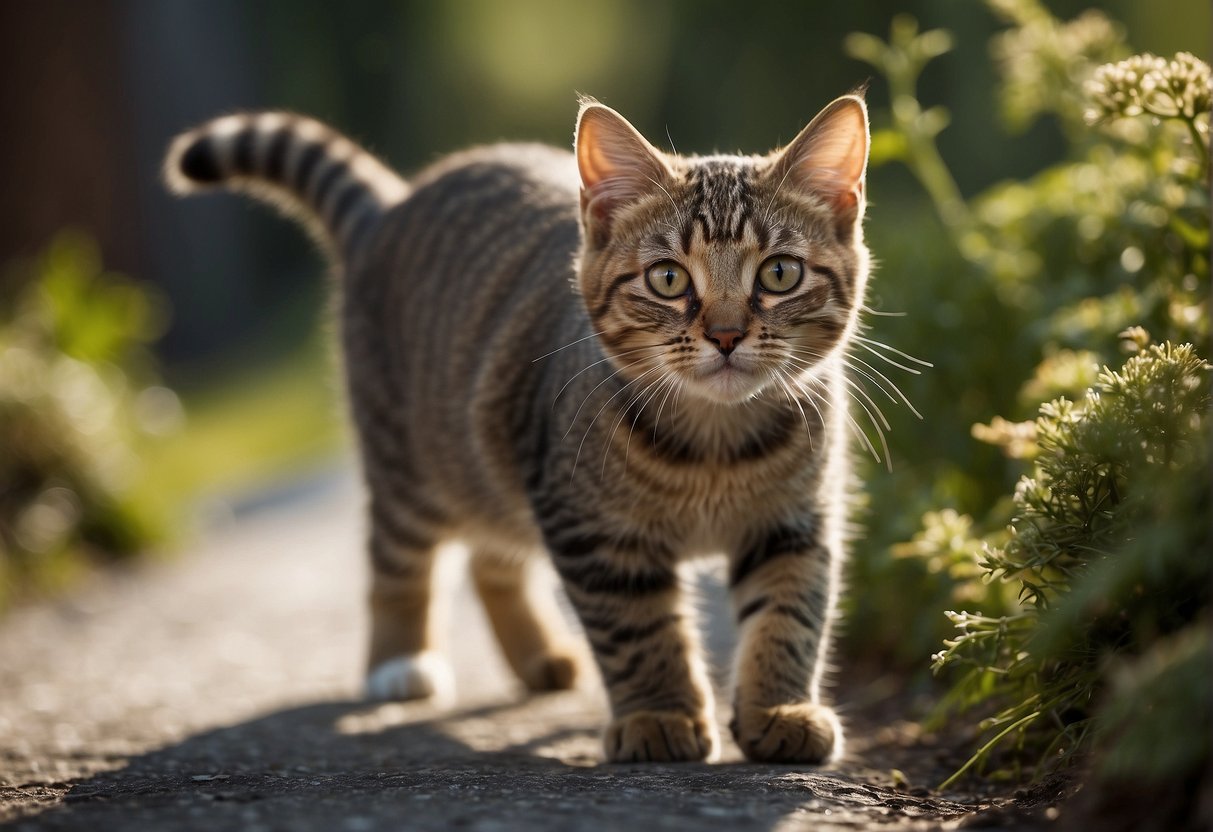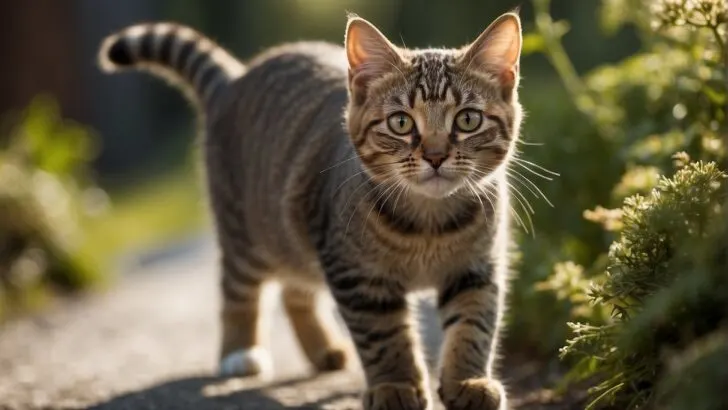Just like their human counterparts, cats also experience puberty, signifying their transition from kittenhood to adulthood.
During this phase, if you’ve lived with a young cat, you might have noticed a shift in their behavior as they navigate the changes taking place in their body.
Your little furball may have suddenly become a bundle of energy, dashing around the house at breakneck speeds or showing a newfound interest in the great outdoors. They might stare longingly out the window or attempt escape feats at the door.

Apart from the surge in energy and curiosity, you may have also observed changes in the way your cat vocalizes. They might meow more persistently or in different tones as they attempt to communicate their developing needs and desires.
If your cat isn’t spayed or neutered, the puberty phase may also introduce mating behaviors such as marking territory with urine, which is not always pleasant if it happens indoors!
Understanding that puberty in cats typically begins around 4 to 6 months of age and can stretch out for several months helps you to better prepare and support your feline friend through this significant period of growth.
Feline Puberty Explained
Navigating through your cat’s puberty can be a fascinating journey. As they step into feline adolescence, you’ll notice significant changes brought on by hormonal maturity — in both behavior and physical development.
The Biology of Cat Puberty
Feline puberty is marked by the onset of sexual maturity, initiating the transition from kittenhood to adulthood.
Hormonal changes play a crucial role here, influencing both the reproductive system and behavior.
For instance, the increase in hormones like testosterone and estrogen triggers the development of secondary sexual characteristics and can lead to behaviors such as territorial marking or heightened aggression.
- Female cats, or queens, will start their estrous cycle or ‘heat,’ indicating their readiness to mate.
- Male cats, referred to as toms, will display a desire to roam and may become more vocal or start spraying to mark their territory with pheromones.

Age at Which Cats Reach Puberty
Puberty in cats, much like in humans, varies in its onset. Typically, cats reach this stage at around six months of age, but it can occur as early as four months and as late as nine months. The timing can depend on several factors:
- Breed: Certain breeds may mature slower or faster than others.
- Nutrition: A well-nourished kitten is likely to reach puberty at the earlier end of the spectrum.
- Health: Overall health can also impact the timing of sexual maturity.
A quick look at the age markers:
| Age Range | Event |
|---|---|
| 4-6 months | Early onset of puberty; some cats may show signs of sexual maturity |
| 6-9 months | Average age when most cats reach puberty |
| Beyond 9 months | Some cats, especially certain breeds, may reach puberty slightly later |
As your cat enters puberty, it’s important to consider neutering or spaying to prevent unwanted litters and reduce some of the behavioral issues associated with maturity.
Physical and Behavioral Changes
During the journey of feline development, your cat will encounter a phase akin to adolescence where both their body and behavior undergo significant changes due to the hormonal shifts that mark their sexual maturity.
Hormonal Influence on Behavior
As your cat reaches puberty, hormones like testosterone in male cats, and estrogen in female cats, surge, leading to distinct behavioral transformations.
In male cats, testosterone prompts actions such as spraying to mark their territory with a strong scent.
Meanwhile, females, when in heat, can become vocally more expressive and may display a noticeable increase in affectionate behaviors, as their body’s way of signaling readiness for mating.
External Signs of Maturation
Alongside behavioral changes, your cat will show visible physical changes as well.
- Male cats: Development of secondary physical characteristics, such as a thicker neck and larger, muscular build.
- Female cats: Start of the heat cycles and subtle changes in the body shape to prepare for potential pregnancy.
Both male and female cats may undergo a growth spurt, including weight gain and muscle development.

My name is James, and welcome to FAQCats!
Along with our team of cat owners, expert pet enthusiasts, and pet professionals, we aim to write engaging helpful, engaging content about cats. At FAQCats we strive to provide content that’s accurate and fun to read. Our team writes about everything related to cats; even the most complex of topics. Through extensive research and caring for our own fur-pals, we’re able to provide something cat owners worldwide will love. Have a look around, and leave us feedback anytime!

